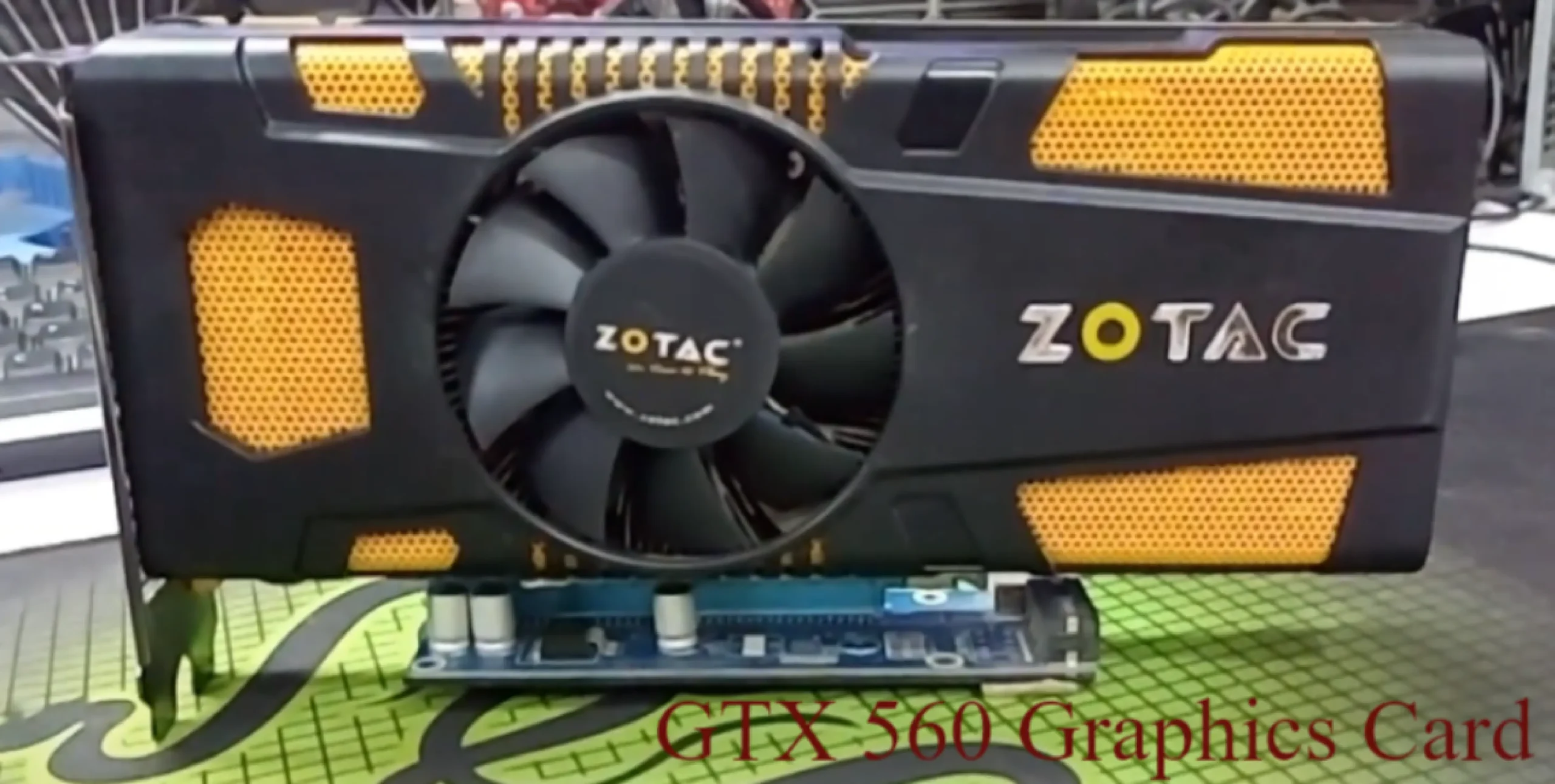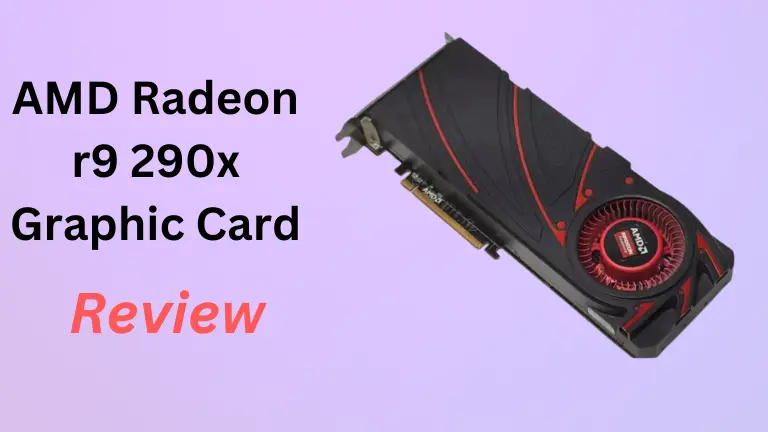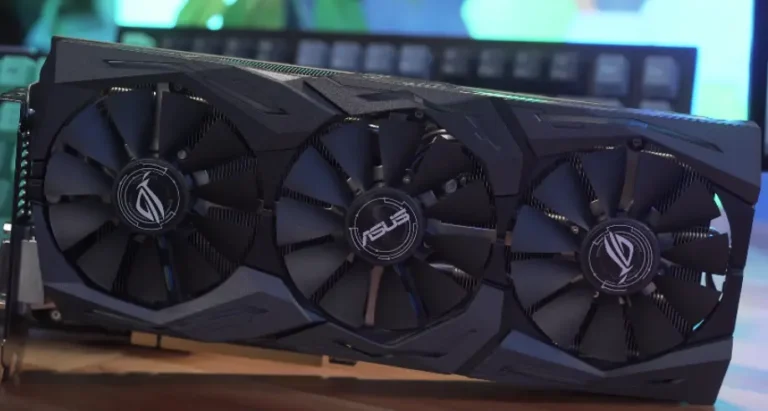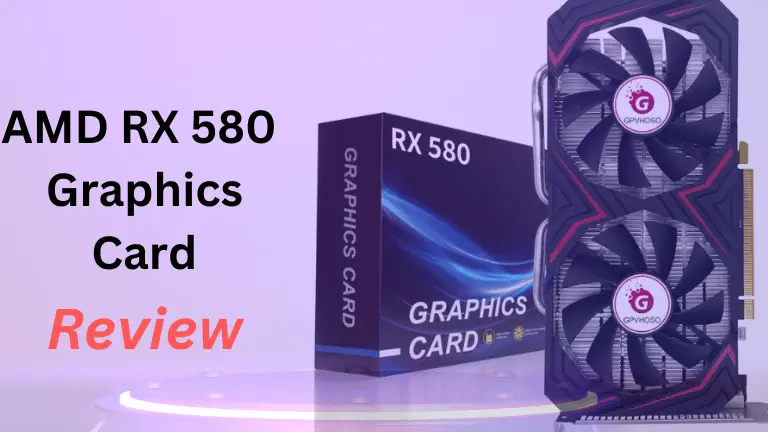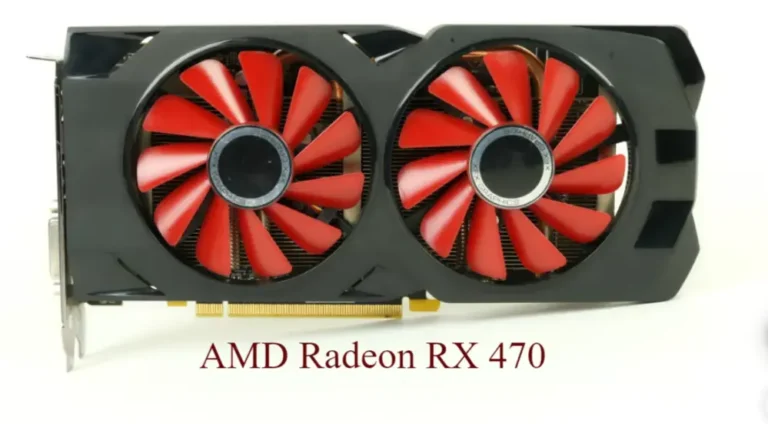Nvidia Geforce Gtx 560 Graphics Card Specs 2024 (Yay or Nay)
The Nvidia GeForce GTX 560 is a choice for gamers and video editors in 2024; it’s reliable and of good value. It holds its ground in its class with 810 MHz and 1,024 MB GDDR5 memory.
This card has the GF114 graphics processor, 336 shaders, and supports DirectX 12 (feature level 11_0), so it’s suitable for most modern games. 256-bit memory bus and 150W max power consumption, it’s efficient.
In this review, we’ll go into its specs, benchmarks, compatibility with current games, and overall value in the market today.
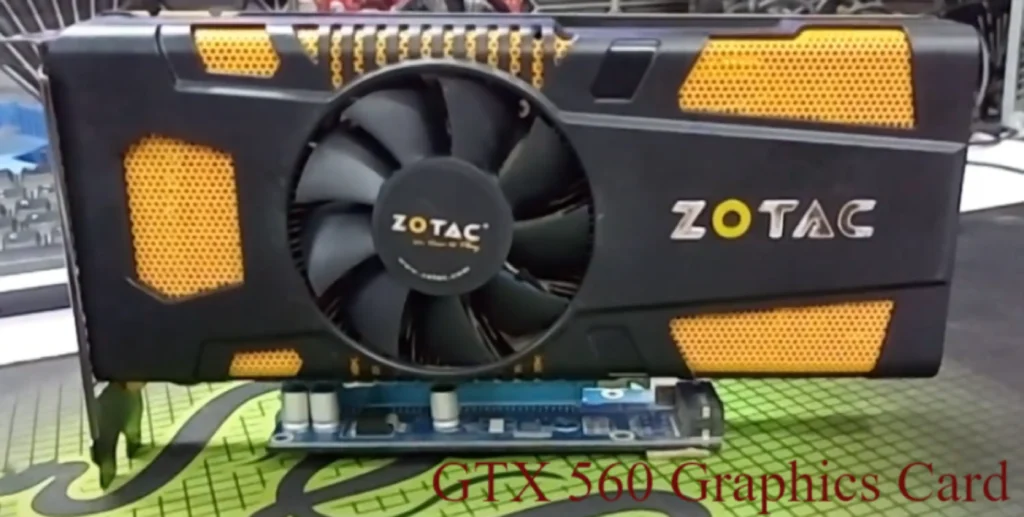
Nvidia GeForce GTX 560 Graphics Card Specification
The Nvidia Geforce is the best graphics card for graphic designing and multitasking.
Here is the table of specifications for the Nvidia GeForce GTX 560 graphics card, including ratings for each aspect:
| Specification | Details | Rating |
|---|---|---|
| Architecture | Fermi (GF114) | ⭐⭐⭐⭐ |
| CUDA Cores | 384 | ⭐⭐⭐ |
| Core Clock | 822 MHz | ⭐⭐⭐⭐ |
| Shader Clock | 1644 MHz | ⭐⭐⭐⭐ |
| DirectX | 11 | ⭐⭐⭐⭐ |
| Memory Type | GDDR5 | ⭐⭐⭐⭐⭐ |
| Memory Size | 1GB | ⭐⭐⭐ |
| Memory Clock | 4008 MHz | ⭐⭐⭐⭐ |
| Memory Interface | 256-bit | ⭐⭐⭐⭐ |
| Bandwidth | 128.3 GB/s | ⭐⭐⭐⭐ |
| Frame Rate | High in modern games | ⭐⭐⭐ |
| Overclocking Potential | High | ⭐⭐⭐⭐ |
| Use Cases | Gaming, 3D Rendering | ⭐⭐⭐⭐ |
| GPU Acceleration | Supported | ⭐⭐⭐⭐ |
| TDP | 170 watts | ⭐⭐⭐ |
| Recommended PSU | 500 watts | ⭐⭐⭐⭐ |
| Power Connectors | 2 x 6-pin PCIe | ⭐⭐⭐⭐ |
| Power Management | Dynamic Adjustment | ⭐⭐⭐⭐ |
| Efficiency | High | ⭐⭐⭐ |
| DVI Ports | 2 x Dual-Link DVI-I | ⭐⭐⭐⭐⭐ |
| HDMI Port | 1 x Mini-HDMI 1.4a | ⭐⭐⭐⭐ |
| Maximum Resolution | 2560×1600 (DVI) | ⭐⭐⭐⭐ |
| 3D Support | Yes (via HDMI) | ⭐⭐⭐⭐ |
| Multi-Monitor Setup | Supported | ⭐⭐⭐⭐ |
| Interface | PCI Express 2.0 | ⭐⭐⭐⭐⭐ |
| Operating Systems | Windows, Linux | ⭐⭐⭐⭐ |
| Nvidia Technologies | PhysX, CUDA, 3D Vision | ⭐⭐⭐⭐ |
| Driver Updates | Regular | ⭐⭐⭐⭐ |
| Installation | Easy | ⭐⭐⭐⭐ |
These ratings are based on the performance and features of the Nvidia GeForce GTX 560, considering its release time and with the current technological standards.
Graphics Processor
The Nvidia GeForce GTX 560 is powered by the GF114 graphics processor based on the Fermi architecture. The GF114 chip has 384 CUDA cores, which is a boost in parallel processing. With the improved design, the GTX 560 is faster and more efficient than its predecessors.
The core clock of the GTX 560 is 822 MHz, and the shader clock is 1644 MHz. This can handle complex graphics and computation tasks. The GF114 architecture has also improved Z-culling and cache efficiency, making it better for rendering graphics.
Nvidia has optimized the GTX 560 for DirectX 11, so it’s compatible with the latest games like Free Fire, BGMI, GTA V as well as applications like Premier Pro and After Effects. The card has high-end graphical features like tessellation, which makes the 3D models more detailed and realistic. This makes the GTX 560 a good option for gamers and professionals.
| Characteristic | Specification |
|---|---|
| Architecture | Fermi (GF114) |
| CUDA Cores | 384 |
| Core Clock | 822 MHz |
| Shader Clock | 1644 MHz |
| DirectX | 11 |
Memory
The Nvidia GeForce GTX 560 has 1GB GDDR5 memory at 4008 MHz. 256-bit memory bus provides 128.3 GB/s bandwidth, fast data transfer, and smooth performance in heavy applications.
The GDDR5 memory used in the GTX 560 is known for its speed and efficiency. This memory config can handle large textures and high-resolution displays without a bottleneck. This is good for gaming and professional applications that require high memory bandwidth.
Also, the GTX 560 memory system has advanced features like error correction and dynamic memory clock adjustment.
| Characteristic | Specification |
|---|---|
| Memory Type | GDDR5 |
| Memory Size | 1GB |
| Memory Clock | 4008 MHz |
| Memory Interface | 256-bit |
| Bandwidth | 128.3 GB/s |
Performance
The Nvidia GeForce GTX 560 performs well in most applications. Thanks to the powerful GF114 GPU and fast GDDR5 memory, it’s good in modern games at high settings. Benchmarks show that the GTX 560 has high frame rates in heavy games, so it’s a good option for gamers.
The card is designed for parallel processing; 384 CUDA cores give it much computational power. This makes the GTX 560 suitable for gaming and applications like video editing, 3D rendering, and scientific simulations that use GPU acceleration.
In terms of overclocking, the GTX 560 is good. With good cooling and power, users can push the core and memory clocks higher to perform better. This flexibility makes the GTX 560 a good option for enthusiasts who want to squeeze more out of their hardware.
| Characteristic | Specification |
|---|---|
| Frame Rate | High in modern games |
| CUDA Cores | 384 |
| Overclocking Potential | High |
| Use Cases | Gaming, 3D Rendering |
| GPU Acceleration | Supported |
Power Consumption
The Nvidia GeForce GTX 560 has a Thermal Design Power (TDP) of 170 watts, which is moderate for a card of its performance. This power requirement means the card can be used in most systems without a robust or expensive power supply.
To run the GTX 560, a minimum of 500W power supply unit (PSU) is recommended. The card has two 6-pin PCIe power connectors for stable and reliable power delivery. Power management features are also efficient; the card can adjust power consumption based on workload to reduce power consumption during low usage.
The GTX 560’s power efficiency is also thanks to the refined Fermi architecture, which has many optimizations that reduce power consumption without sacrificing performance.
| Characteristic | Specification |
|---|---|
| TDP | 170 watts |
| Recommended PSU | 500 watts |
| Power Connectors | 2 x 6-pin PCIe |
| Power Management | Dynamic Adjustment |
| Efficiency | High |
Ports and Connectors
The Nvidia GeForce GTX 560 has multiple ports and connectors to fit different display setups. The card has two dual-link DVI-I and a mini-HDMI 1.4a output to connect multiple monitors for expanded desktop or immersive gaming.
The dual-link DVI-I ports can support up to 2560×1600 resolution, so they are suitable for high-definition monitors. The mini-HDMI port supports the latest HDMI standards, including 3D content and high-definition audio, so it’s compatible with modern displays and audio systems.
These ports make the GTX 560 versatile for different setups, whether for gaming, professional work, or multimedia consumption. Connecting multiple monitors also increases productivity by giving you more screen real estate for multitasking.
| Characteristic | Specification |
|---|---|
| DVI Ports | 2 x Dual-Link DVI-I |
| HDMI Port | 1 x Mini-HDMI 1.4a |
| Maximum Resolution | 2560×1600 (DVI) |
| 3D Support | Yes (via HDMI) |
| Multi-Monitor Setup | Supported |
Compatibility
The Nvidia GeForce GTX 560 is designed to be compatible with most systems and configurations. It supports PCI Express 2.0, which can be installed on any modern motherboard with a compatible PCIe slot. This broad compatibility makes the GTX 560 a good option for new builds and upgrades.
Regarding software, the GTX 560 is compatible with all major operating systems, including Windows and Linux. Nvidia updates its drivers regularly to ensure optimal performance and compatibility with the latest games and applications. So you’ll have a smooth and hassle-free experience no matter your software environment.
Also, the GTX 560 supports Nvidia technologies like PhysX, CUDA, and 3D Vision for extra functionality and performance.
These details give you a complete overview of the Nvidia GeForce GTX 560’s features and specs, so you’re well-informed about the card.
| Characteristic | Specification |
|---|---|
| Interface | PCI Express 2.0 |
| Operating Systems | Windows, Linux |
| Nvidia Technologies | PhysX, CUDA, 3D Vision |
| Driver Updates | Regular |
| Installation | Easy |
These details give you a complete overview of the Nvidia GeForce GTX 560’s features and specs, so you’re well-informed about the card.
Comparison of Nvidia GeForce GTX 560 Alternatives
In 2024, the Nvidia GeForce GTX 560 will no longer be a top-of-the-line graphics card but will still be relevant in specific use cases and budget builds. To see where it stands in the current market, let’s compare it with other GPUs: Nvidia GeForce GTX 1660, AMD Radeon RX 570, AMD Radeon R9 290X, and AMD Radeon R9 390X.
Here is the comparison table of the Nvidia GeForce GTX 560 with other GPUs: Nvidia GeForce GTX 1660, AMD Radeon RX 570, AMD Radeon R9 290X, and AMD Radeon R9 390X.
| Specification | Nvidia GeForce GTX 560 | Nvidia GeForce GTX 1660 | AMD Radeon RX 570 | AMD Radeon R9 290X | AMD Radeon R9 390X |
|---|---|---|---|---|---|
| Architecture | Fermi (GF114) | Turing (TU116) | Polaris (Ellesmere) | Hawaii | Grenada |
| CUDA Cores / Stream Processors | 384 CUDA Cores | 1408 CUDA Cores | 2048 Stream Processors | 2816 Stream Processors | 2816 Stream Processors |
| Core Clock | 822 MHz | 1530 MHz | 1168 MHz | 1000 MHz | 1050 MHz |
| Boost Clock | N/A | 1785 MHz | 1244 MHz | 1040 MHz | N/A |
| Memory | 1GB GDDR5 | 6GB GDDR5 | 4GB/8GB GDDR5 | 4GB GDDR5 | 8GB GDDR5 |
| Memory Speed | 4008 MHz | 8000 MHz | 7000 MHz | 5000 MHz | 6000 MHz |
| Memory Interface | 256-bit | 192-bit | 256-bit | 512-bit | 512-bit |
| TDP | 170W | 120W | 150W | 290W | 275W |
This comparison table highlights the differences in specifications between the Nvidia GeForce GTX 560 and other contemporary GPUs.
Gtx 560 Vs GTX 1660
The Nvidia GeForce GTX 1660 is a mid-range graphics card based on the Turing architecture. It’s designed to give you excellent performance for 1080p gaming without the high price tag of higher-end GPUs.
Specs Comparison Table
| Specification | GTX 560 | GTX 1660 |
|---|---|---|
| Architecture | Fermi (GF114) | Turing (TU116) |
| CUDA Cores | 384 | 1408 |
| Core Clock | 822 MHz | 1530 MHz |
| Boost Clock | N/A | 1785 MHz |
| Memory | 1GB GDDR5 | 6GB GDDR5 |
| Memory Speed | 4008 MHz | 8000 MHz |
| Memory Interface | 256-bit | 192-bit |
| TDP | 170W | 120W |
The GTX 1660 beats the GTX 560 in almost all aspects. With higher core and boost clock speeds, more CUDA cores, and larger and faster memory, the GTX 1660 is suitable for modern gaming and demanding applications. In benchmarks, the GTX 1660 gives higher frame rates in 1080p gaming and can handle higher graphics settings compared to the GTX 560.
Gtx 560 Vs Radeon RX 570
The AMD Radeon RX 570 is a mid-range option from the Polaris architecture for gamers who want 1080p performance at an affordable price.
Specs Comparison Table
| Specification | GTX 560 | RX 570 |
|---|---|---|
| Architecture | Fermi (GF114) | Polaris (Ellesmere) |
| Stream Processors | 384 CUDA Cores | 2048 |
| Core Clock | 822 MHz | 1168 MHz |
| Boost Clock | N/A | 1244 MHz |
| Memory | 1GB GDDR5 | 4GB/8GB GDDR5 |
| Memory Speed | 4008 MHz | 7000 MHz |
| Memory Interface | 256-bit | 256-bit |
| TDP | 170W | 150W |
Specs Comparison Table
The RX 570 has a big jump in performance over the GTX 560, especially in gaming. It has more stream processors, higher clock speeds, and more significant memory, so you’ll get a smoother 1080p gaming experience with higher detail settings. The RX 570 also supports FreeSync, which reduces screen tearing.
Gtx 560 Vs Radeon R9 290X
The AMD Radeon R9 290X is a high-end graphics card from an older generation based on Hawaiian architecture. It was designed for 1440p gaming.
Specs Comparison Table
| Specification | GTX 560 | R9 290X |
|---|---|---|
| Architecture | Fermi (GF114) | Hawaii |
| Stream Processors | 384 CUDA Cores | 2816 |
| Core Clock | 822 MHz | 1000 MHz |
| Boost Clock | N/A | 1040 MHz |
| Memory | 1GB GDDR5 | 4GB GDDR5 |
| Memory Speed | 4008 MHz | 5000 MHz |
| Memory Interface | 256-bit | 512-bit |
| TDP | 170W | 290W |
The R9 290X is a beast compared to the GTX 560, performing much better in gaming and professional applications. It has more stream processors, a more comprehensive memory interface, and faster memory to handle 1440p gaming with high settings. The R9 290X also supports Mantle and DirectX 12, which gives it extra performance in compatible games.
Gtx 560 Vs Radeon R9 390X
The AMD Radeon R9 390X is an improved version of the R9 290X based on the Grenada architecture. It has better performance and efficiency for high-resolution gaming.
Specs Comparison Table
| Specification | GTX 560 | R9 390X |
|---|---|---|
| Architecture | Fermi (GF114) | Grenada |
| Stream Processors | 384 CUDA Cores | 2816 |
| Core Clock | 822 MHz | 1050 MHz |
| Boost Clock | N/A | N/A |
| Memory | 1GB GDDR5 | 8GB GDDR5 |
| Memory Speed | 4008 MHz | 6000 MHz |
| Memory Interface | 256-bit | 512-bit |
| TDP | 170W | 275W |
The R9 390X builds on the R9 290X’s strengths with more memory and higher memory speed. So it’s good for 1440p and even 4K gaming. Its 8GB GDDR5 memory is excellent for high-bandwidth applications like video editing and 3D rendering.
The Nvidia GeForce GTX 560 was a sound card in its time, but GPU technology has moved on. Modern GPUs like the Nvidia GeForce GTX 1660 and AMD Radeon RX 570 have better performance, efficiency, and features. High-end options like the AMD Radeon R9 290X and R9 390X have better performance for higher resolutions and demanding applications.
Pros and Cons of GTX 560
When it was released, the Nvidia GeForce GTX 560 was a popular card; it was known for its balance of performance and price. However, as technology has moved on, its relevance in modern gaming and computing has decreased. Here’s the pros and cons of the GTX 560:
Pros of Nvidia GeForce GTX 560
- Affordable Price Point:
The GTX 560 had a good balance of price and performance, so it was a popular choice for budget gamers. - Solid 1080p Gaming Performance (At the Time):
The GTX 560 can handle 1080p gaming and many popular games with decent frame rates in medium to high settings. - Overclocking Potential:
The GTX 560 is overclockable, so that you can push the card beyond its stock performance for better gaming. - PhysX and CUDA Support:
Nvidia’s PhysX and CUDA technology gives better physics simulations and faster computing tasks for supported applications. - Good Build Quality:
The card has good build quality and reliable components, so it’s durable and long-lasting.
Cons of Nvidia GeForce GTX 560
- Outdated Performance:
In 2024, the GTX 560 can’t keep up with modern gaming. It can’t handle new games at acceptable settings and frame rates. - Limited VRAM:
With only 1GB of GDDR5 memory, the GTX 560 is severely limited in handling modern games and applications that require more memory. - High Power Consumption:
The GTX 560 has a TDP of 170W, which is high for its performance. So, it consumes more power and heat compared to more efficient modern GPUs.
Here is the table summarizing the pros and cons of the Nvidia GeForce GTX 560:
| Affordable Price Point | Outdated Performance |
| Solid 1080p Gaming Performance (At the Time) | Limited VRAM |
| Overclocking Potential | High Power Consumption |
| PhysX and CUDA Support | |
| Good Build Quality |
My Personnel Review about Nvidia GeForce GTX 560
I installed the Nvidia GeForce GTX 560 in my system and was eager to see how it would perform in gaming and general computing. Installation was easy, and the card fit perfectly in my PCI Express slot with the two 6-pin power connectors.
One of the things I noticed was the build quality of the card. The GTX 560 feels solid and well-built, so I have confidence in its durability. After I installed the drivers and everything was set up, I fired up some of my favorite games to test their performance.
In games like “Battlefield 3” and “Skyrim,” the GTX 560 performed well at 1080p. I could play these games at medium to high settings with smooth frame rates, so it was a good gaming experience. The card’s support for DirectX 11 and Nvidia’s PhysX technology also added to the visual fidelity and realism of the game.
However, as time passed and newer, more demanding games were released, the GTX 560 started showing its age. In games like “The Witcher 3” and “GTA V,” I had to lower the settings to get playable frame rates. The 1GB of GDDR5 memory quickly became a bottleneck, as it limited the card to handle high-resolution textures and complex scenes.
The Nvidia GeForce GTX 560 served me well during its prime years. It was a good balance of performance and affordability for mid-range gaming and general use. However, its limitations became apparent as technology advanced, and I upgraded to a more robust and efficient GPU. For those who look back at the GTX 560, it’s a nostalgic reminder of how far graphics technology has come.
Conclusion
The Nvidia GeForce GTX 560, built on the Fermi architecture, was a reliable mid-range graphics card during its release. Featuring 384 CUDA cores and 1GB of GDDR5 memory, it provided solid 1080p gaming performance for its time. The card’s overclocking potential and support for Nvidia technologies like PhysX and CUDA made it a popular choice among budget-conscious gamers.
Compared to modern GPUs, the GTX 560 falls short in terms of performance and efficiency. Newer models like the GTX 1660 and RX 570 offer significantly better performance, lower power consumption, and support for contemporary gaming features. Despite its higher TDP of 170W, the GTX 560’s power management was innovative for its era.
In 2024, the GTX 560 is no longer suitable for modern gaming due to its outdated performance and limited VRAM. However, it still holds nostalgic value for those who enjoyed its capabilities during its prime. As technology advances, the GTX 560 serves as a reminder of Nvidia’s progression in delivering affordable and capable graphics solutions.
Overall, the Nvidia GeForce GTX 560 remains a notable part of GPU history, representing a balance of performance and affordability for its time. While it is not practical for modern gaming needs, it contributed significantly to the gaming experiences of many users during its heyday.
FAQs
Nvidia GeForce GTX 560 Release Date?
The Nvidia GeForce GTX 560 was released on May 17, 2011.
Is GTX 560 Good for Gaming?
The GTX 560 was good for gaming at 1080p during its release. However, in 2024, it struggles with modern games and is not recommended for current gaming needs.
How Many GB is GeForce GTX 560?
The GeForce GTX 560 comes with 1GB of GDDR5 memory.
Is GTX 560 Better than GTX 1050?
No, the GTX 1050 outperforms the GTX 560 in gaming and graphics tasks. The GTX 1050 has more efficient architecture and better overall performance.
Can GTX 560 Run 4K?
While the GTX 560 can output to a 4K display, it is not designed for gaming at 4K resolution. It is better suited for lower resolutions like 1080p.

